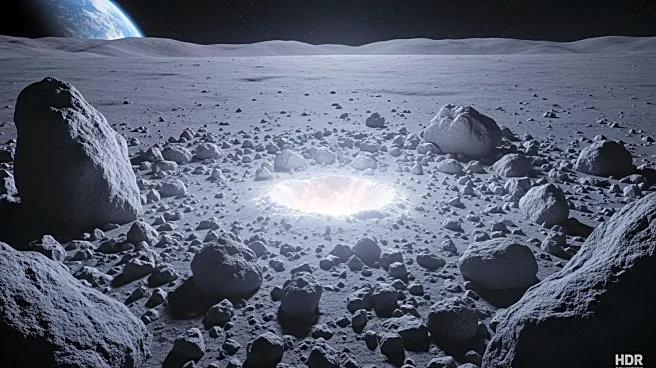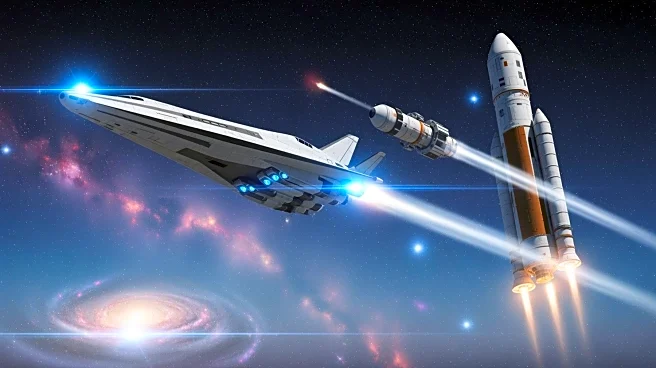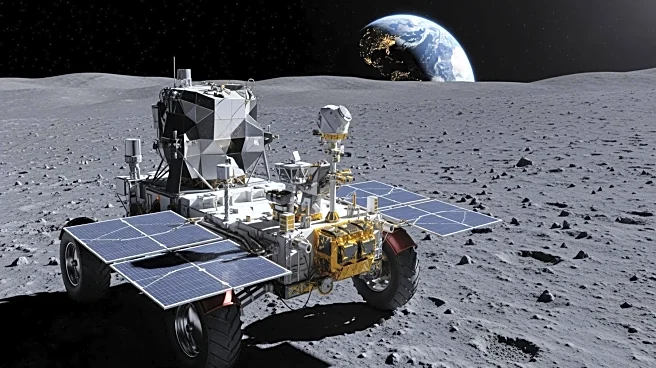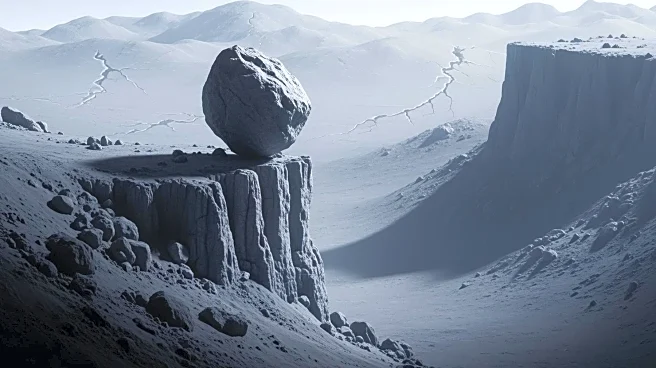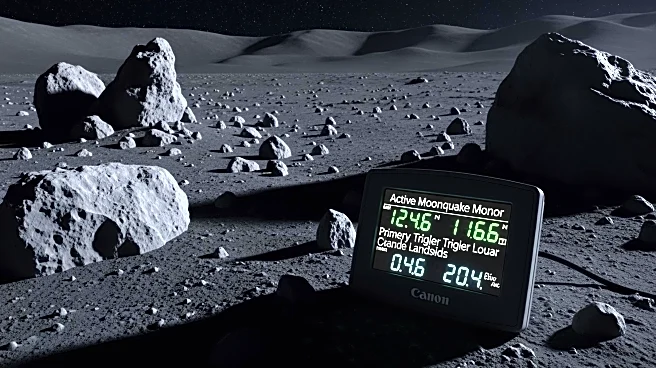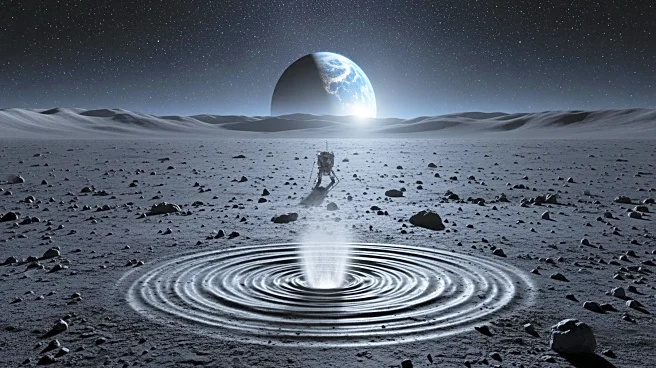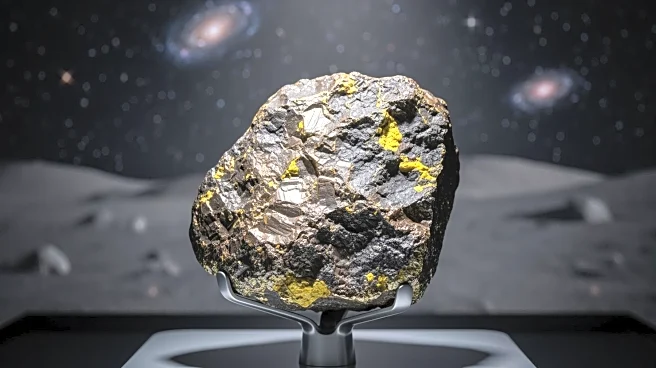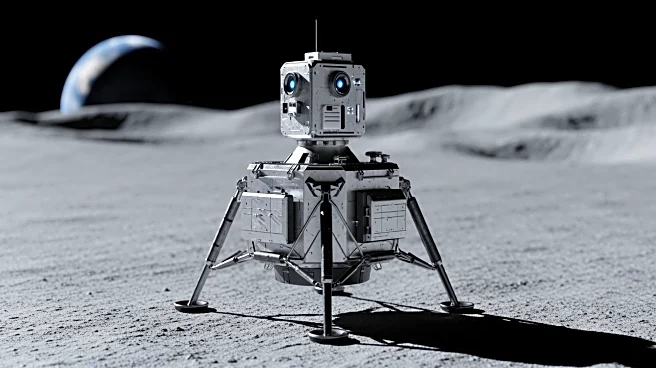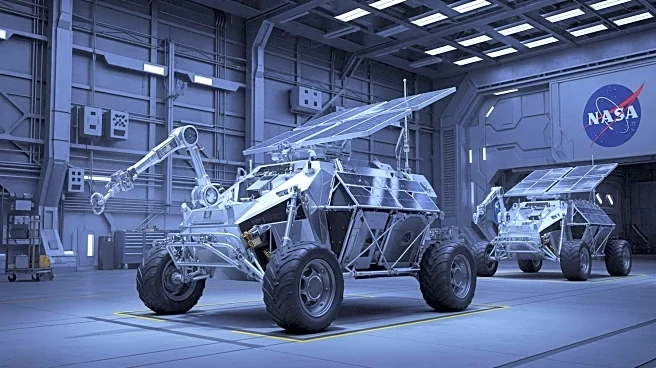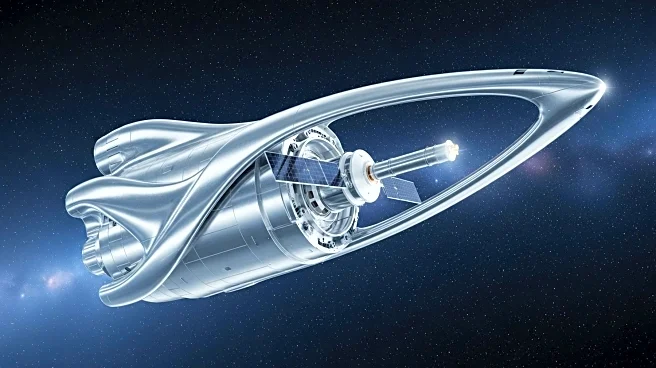What's Happening?
A recent study has identified internal seismic activity, known as moonquakes, as the primary trigger for landslides on the Moon, challenging previous assumptions that meteoroid impacts were the main cause. The research, conducted by a team of Chinese
scientists, analyzed 15 years of images from NASA's Lunar Reconnaissance Orbiter Camera (LROC) and identified 41 new landslides on the lunar surface since 2009. These findings suggest that the Moon is more geologically active than previously understood, with seismic activity concentrated in regions like the eastern Imbrium Basin. The study provides crucial insights into lunar geological processes, which are essential for future human exploration and the establishment of permanent bases on the Moon.
Why It's Important?
Understanding the Moon's current geological activity is vital for assessing geohazard risks to future lunar missions. The discovery that moonquakes, rather than meteoroid impacts, are the primary cause of landslides has significant implications for mission planning and the safety of future Moon bases. As plans for permanent lunar facilities accelerate, these findings highlight the importance of avoiding construction near steep slopes in seismically active areas. The study also offers a map of potential seismic hotspots, which could guide future exploration of the Moon's interior without the need for a planet-wide network of sensors.
What's Next?
The study's findings will likely influence the planning and location of future lunar missions and bases. As the Moon's geological activity is better understood, mission planners may need to reassess the risks associated with building in certain areas. The identification of seismic hotspots could lead to more targeted exploration efforts, potentially involving the deployment of new sensors to monitor lunar seismic activity. Additionally, these insights may drive further research into the Moon's geological history and its implications for lunar exploration.
Beyond the Headlines
The revelation that the Moon is geologically active challenges long-held perceptions of it as a static, lifeless world. This discovery not only advances scientific understanding but also raises questions about the Moon's past and its potential for future exploration. The study bridges a gap between historical lunar events and present-day processes, offering a new perspective on the Moon's dynamic nature. As humanity looks to establish a presence on the Moon, these findings underscore the need for careful consideration of geological factors in mission planning.
